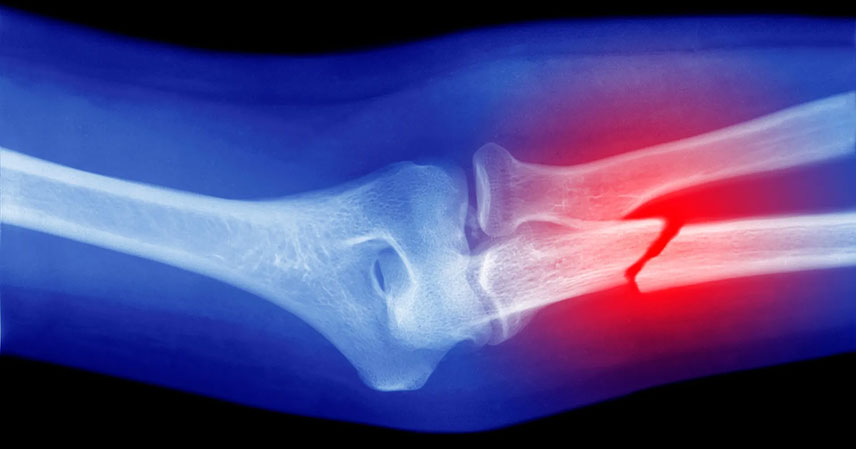In an era increasingly defined by environmental challenges, a new and alarming piece of research has emerged, casting a long shadow over global public health. Recently published findings suggest that the insidious presence of microplastics within the human body could be a significant, previously unacknowledged factor driving the worldwide surge in osteoporosis cases. This groundbreaking revelation moves beyond the conventional understanding of bone health, pointing to a pervasive environmental contaminant as a potential disruptor of our fundamental biological processes.
Osteoporosis, often silently progressing until a debilitating fracture occurs, is a condition characterized by bones becoming weak and brittle. It arises when the delicate balance between bone breakdown and regeneration is disrupted, with the former outpacing the latter. Traditional risk factors are well-documented, ranging from age and gender to certain medications, dietary habits, smoking, alcohol consumption, and genetic predispositions. For decades, our focus has been primarily on these internal and lifestyle-related elements. However, this new analysis, prominently featured in the journal Osteoporosis International, introduces a compelling and concerning new dimension: exposure to microplastics as a potential novel risk factor, urging us to re-evaluate our comprehensive approach to bone health.
The Microscopic Mechanism of Bone Erosion 🔬
The core of this research illuminates a complex biological pathway through which microplastics exert their detrimental effects. The study, a meticulous review of 62 scientific articles encompassing various laboratory and animal tests, reveals that these tiny plastic fragments—once ingested or inhaled—do not merely pass through the body harmlessly. Instead, they actively interfere with the crucial machinery responsible for maintaining bone integrity: the bone marrow stem cells. These cells are the architects of our skeletal system, perpetually working to repair and replenish bone tissue throughout our lives.
A deeper dive into lab experiments cited in the review demonstrates that microplastics stimulate the formation and activity of osteoclasts. These cells, derived from bone marrow stem cells, are specifically designed to degrade bone tissue, a process known as resorption. While essential for removing old or damaged bone, an overabundance or overactivity of osteoclasts leads to an imbalance, where bone destruction outstrips bone formation. The research further found that plastic particles can significantly reduce the viability of cells pertinent to bone health, induce premature cellular aging, modify critical gene expression patterns, and trigger chronic inflammatory responses. This dangerous confluence of effects creates an environment where osteoclasts aggressively destroy more bone tissue than can be regenerated, resulting in an accelerated weakening of the bone structure and increasing susceptibility to fractures.
Furthermore, animal studies reviewed presented equally troubling evidence. The accumulation of microplastics in the body was associated with a noticeable decrease in white blood cell count, a finding suggestive of broader alterations in bone marrow function. More directly, these animal models indicated that the impact of microplastics on osteoclasts may be intrinsically linked to a deterioration of bone microstructure and the formation of irregular cellular structures. Such changes undoubtedly heighten the risk of bone fragility, deformities, and ultimately, fractures. As coauthor Rodrigo Bueno de Oliveira pertinently noted in a press release, the observed adverse effects culminated, worryingly, in the interruption of the animals’ skeletal growth, underscoring the non-negligible potential impact of microplastics on bones.
The Pervasive Reach of Microplastics: An Environmental Scourge 🌍
To fully grasp the magnitude of this threat, it is imperative to understand the nature and ubiquity of microplastics themselves. These are minute fragments of plastic, some so infinitesimally small they are invisible to the naked eye. They arise from the degradation of larger plastic items when exposed to environmental forces such as sunlight, wind, rain, seawater, or simple abrasion. While nanoplastics are even smaller, measuring less than 1 micrometer, microplastics range from 1 micrometer to 5 millimeters. Regardless of their exact size, their sheer prevalence is staggering.
Microplastics have infiltrated virtually every corner of our planet. They have been detected in the deepest oceans, the highest mountain peaks, and even the pristine air of remote regions. More concerningly, they are now routinely found throughout the human body, in our bloodstreams, lungs, and various organs. Our food supply is not immune; microplastics have been identified in meat, water sources, and a wide array of agricultural products. This omnipresence means that human exposure is continuous and unavoidable, making the findings on bone health particularly urgent. Experts have long warned that this type of plastic contamination poses significant health risks, advocating for drastic reductions in plastic usage.
The scale of the problem is monumental. Annually, over 500 million tons of plastic material are produced worldwide. Yet, a disheartening mere 9 percent of this colossal volume is recycled. The vast majority – hundreds of millions of tons – disperses into the environment, slowly degrading into the very micro and nanoplastics that are now implicated in serious health conditions like osteoporosis. This unsustainable cycle of production, consumption, and pollution creates a feedback loop where our reliance on plastics directly contributes to environmental contamination and, as this research suggests, potentially to our own deteriorating health.
Implications for Public Health and Future Research Pathways 🧪
The implications of this research are profound, extending far beyond the scientific community into the realm of public health policy and individual responsibility. If microplastics are indeed a significant driver of osteoporosis, it means we are facing a potential global health crisis with an entirely new dimension. The projected increase in bone fractures worldwide, often attributed to an aging population, might also be exacerbated by this environmental factor, necessitating a re-evaluation of preventative strategies.
Rodrigo Bueno de Oliveira, coordinator of the Laboratory for Evaluation of Mineral and Bone Disorders in Nephrology at the State University of Campinas in Brazil, and his team are not resting on these initial findings. They are actively pursuing further practical evidence to solidify the relationship between microplastic exposure and bone deterioration. Their upcoming research will involve evaluating the effects of microplastic particles on rodents’ femurs, aiming to provide more direct, mechanistic insights. As Oliveira articulated, “Although osteometabolic diseases are relatively well understood, there’s a gap in our knowledge regarding the influence of microplastics on the development of these diseases. Therefore, one of our goals is to generate evidence suggesting that microplastics could be a potential controllable environmental cause to explain, for example, the increase in the projected number of bone fractures.”
This pursuit of a “controllable environmental cause” is critical. Unlike age or genetics, environmental exposure to microplastics is, in theory, modifiable through collective action and policy changes. Urgent calls for reducing plastic use and improving recycling infrastructure are not just environmental pleas but burgeoning public health imperatives. Policymakers must consider stringent regulations on plastic production, promote the development and adoption of truly biodegradable alternatives, and invest in advanced waste management systems. On an individual level, reducing single-use plastic consumption and supporting sustainable practices can contribute to mitigating this widespread contamination.
Key Insights from the Emerging Threat of Microplastics on Bone Health ✨
- Microplastics are now identified as a potential novel risk factor for osteoporosis, fundamentally disrupting the delicate balance of bone regeneration and degradation processes within the body.
- The primary mechanism involves microplastics stimulating the overproduction and activity of osteoclasts (bone-degrading cells) while simultaneously causing cellular damage, premature aging, and inflammatory responses in bone marrow stem cells, leading to an accelerated weakening of bone structure.
- The pervasive presence of microplastics in our environment and increasingly within the human body underscores the urgent need for both deeper scientific investigation into their long-term health impacts and immediate global action to mitigate plastic pollution through reduced production, improved recycling, and sustainable alternatives.
The revelation that microplastics could be contributing to the global osteoporosis epidemic marks a significant shift in our understanding of disease etiology. It compels us to look beyond individual predispositions and lifestyle choices, recognizing the profound impact of our environment on our health. The invisible particles that permeate our world are no longer just an ecological concern; they are a direct threat to our skeletal integrity and overall well-being. This research serves as a stark reminder that environmental health and human health are inextricably linked. As we move forward, the challenge lies not only in understanding these complex interactions but also in galvanizing global efforts to curb plastic pollution, safeguarding our bones and our planet for future generations.
Source: Microplastics Could Be Weakening Your Bones, Research Suggests



